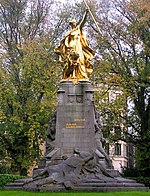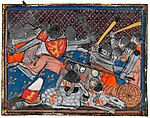Katholieke Hogeschool Zuid-West-Vlaanderen
Buildings and structures in KortrijkBuildings and structures in West FlandersCatholic universities and colleges in BelgiumColleges in BelgiumRoeselare ... and 1 more
Torhout
The Katholieke Hogeschool Zuid-West-Vlaanderen or KATHO was a university college in West Flanders. It had four campuses: Kortrijk, Roeselare, Tielt and Torhout. Since September 1, 2002, KATHO was a member of the K.U.Leuven Association. In 2013, KATHO merged with Katholieke Hogeschool Vives Noord (KHBO) and formed Hogeschool VIVES.KATHO had seven departments Kortrijk: HANTAL Ipsoc HIVV VHTIRoeselare: HIVBTielt: PHOTorhout: RENO
Excerpt from the Wikipedia article Katholieke Hogeschool Zuid-West-Vlaanderen (License: CC BY-SA 3.0, Authors).Katholieke Hogeschool Zuid-West-Vlaanderen
Doorniksesteenweg, Kortrijk
Geographical coordinates (GPS) Address Nearby Places Show on map
Geographical coordinates (GPS)
| Latitude | Longitude |
|---|---|
| N 50.805783333333 ° | E 3.2841916666667 ° |
Address
't Forum
Doorniksesteenweg 145
8500 Kortrijk (Kortrijk)
West Flanders, Belgium
Open on Google Maps









